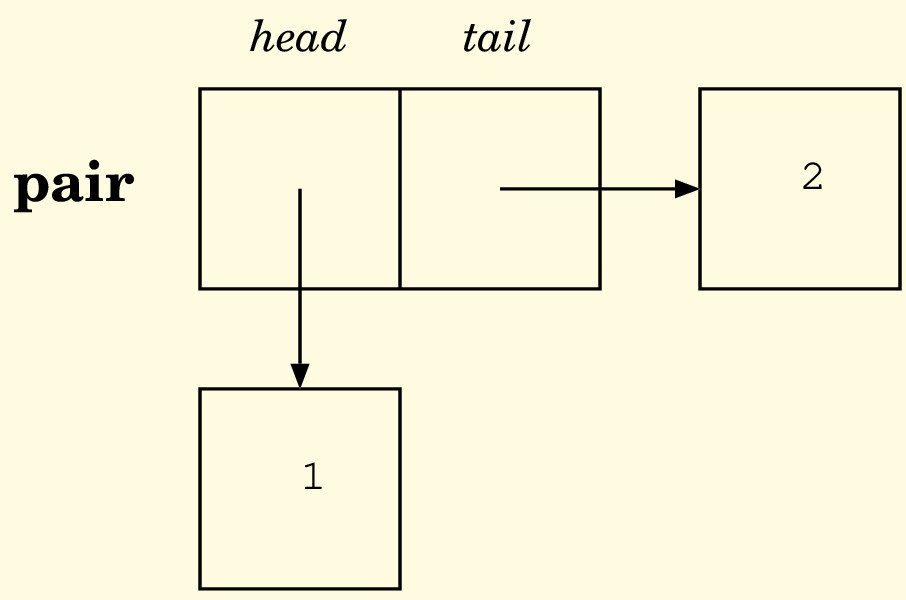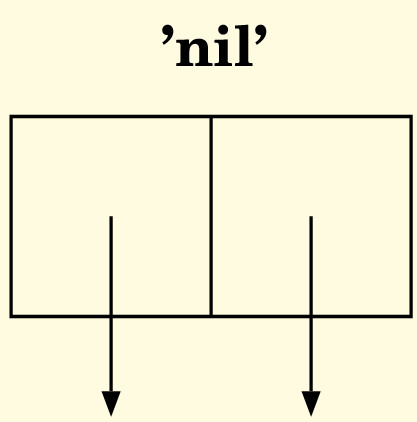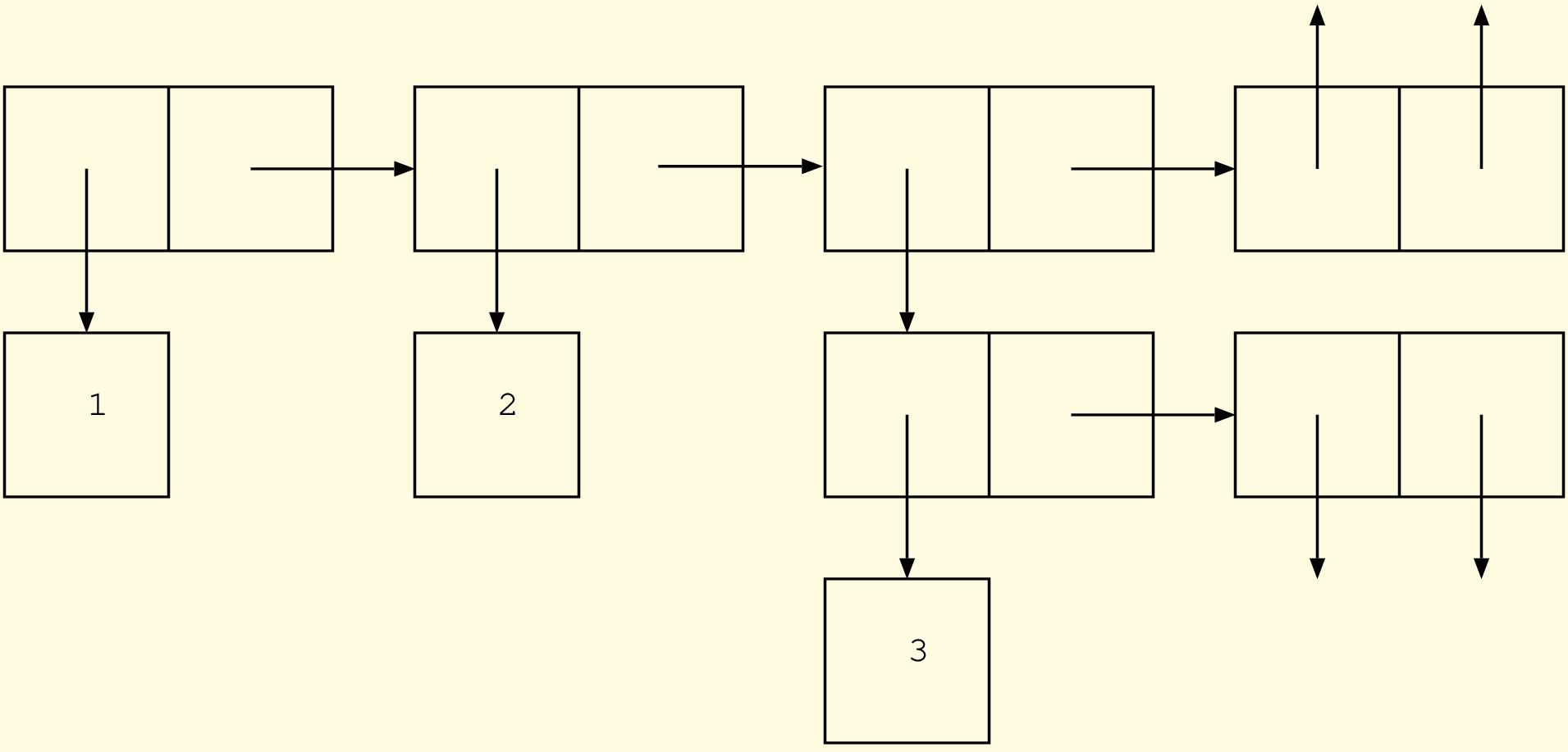




Next: Dictionary Pattern
Up: General Programming Patterns and
Previous: CLAM Pattern
Contents
Start
List Pattern
All programming languages provide a feature to collect data in some sort
of container one way or another.![[*]](./img/footnote.gif) In A++ collections are implemented as
lists and dictionaries.
In A++ collections are implemented as
lists and dictionaries.
Lists are implemented as linked lists of pairs.
A pair is composed of a head and a tail. The head points to a data item and the
tail points to the next pair in the list.
The tail in the last pair of the list points to a special element called `nil' or `null'.
It is the programmer's responsibility to make sure that a list is terminated with the element `nil'.
In order to work with pairs and lists the following abstractions are needed as a minimum:
- cons the constructor of a pair
- car the selector of the head of a pair
- cdr the selector of the tail of a pair
- nullp a predicate to check, whether the list is empty
- pairp a predicate to check, whether the object is a pair
The section lists:basics presents these abstractions and many
more that can be used in the list context.
A head of a pair may be anything, i.e also a reference of
another pair. This way it is possible to construct lists of
lists, providing the power to build a tree or any other network
structure.





Next: Dictionary Pattern
Up: General Programming Patterns and
Previous: CLAM Pattern
Contents
Start
Georg P. Loczewski
2004-03-05

![[*]](./img/footnote.gif) In A++ collections are implemented as
lists and dictionaries.
In A++ collections are implemented as
lists and dictionaries.



